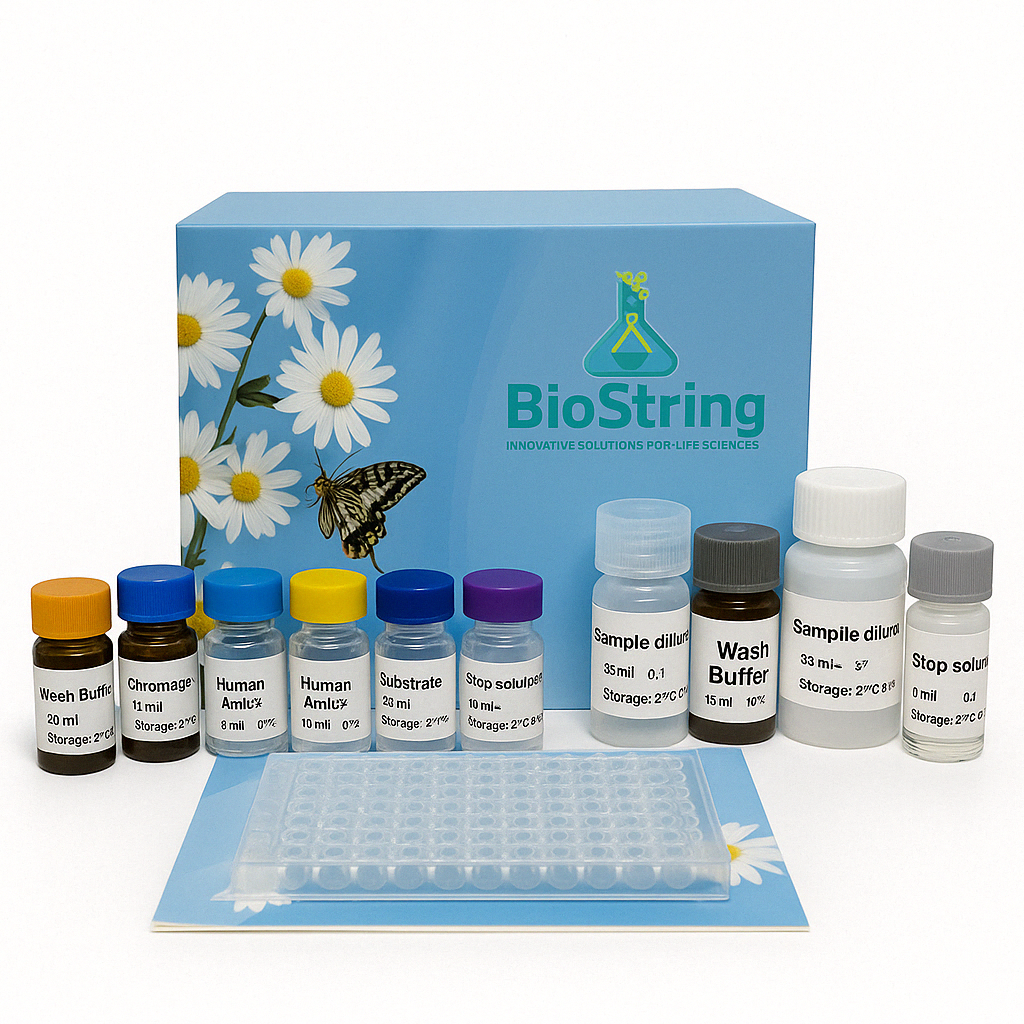Note: Take two or three different samples for prediction before test.
Detection equipment: Spectrophotometer/Microplate reader
Cat No: BC0255
Size: 100T/96S
Components:
Extract solution: 6 mol/L hydrochloric acid (HCl), self-provided reagent. Concentrated HCl(37%):
H2O(V/V) =1:1, stored at room temperature.
Reagent I: 8 mL×1, store at 4℃ and protect from light.
Reagent II: 8 mL×1, store at 4℃ and protect from light.
Standard: 0.5 mL×1, 0.5 mg/mL hydroxyproline, store at 4℃.
Description:
HYP is one of the main components of collagen in the body. Most of the collagen is distributed in the skin, tendon, cartilage and blood vessels et al. Therefore, the content of HYP is an important index reflecting the metabolism and fibrosis degree of collagen tissue.
The sample is hydrolyzed to produce free HYP, which is further oxidized by chloramine T. The oxidized product reacted with p-Dimethylaminobenzaldehyde to produce red compound with characteristic absorption peak at 560 nm. The content of HYP can be calculated by measuring the absorption value of sample hydrolysate at 560 nm.
Required but not provided:
Scales, oven, glass tube, centrifuge, water bath, spectrophotometer/microplate reader, micro glass cuvette/96-well plate, 6 mol/L HCl and distilled water.
Procedure:
I. Sample preparation
1. Tissue sample:
Weigh about 0.2 g of the sample into the glass tube, cut the tissue into pieces as much as possible for digestion. Add 2 mL of Extract solution and the cover is slightly loose and not airtight, boil it or bake it in 110℃ oven for 2 to 6 hours to digest it until there is no visible big lump. After cooling, adjust the pH to 6-8 with 10 mol/L NaOH (Do not over acid or over alkali) then constant volume to 4 mL with distilled water. Centrifugation at 16000 rpm for 20 minutes at 25℃ (if there is still impurity after centrifugation, it can be removed by filtration). Take the supernatant for test. (Black substance may be formed in the process, and if it cannot be digested for a long time, it may be carbonized substance. It does not affect the experiment).
2. Cells:
Take 5 million cells, add 1 mL of Extract solution, boil or oven at 110℃ for 2 to 6 hours to digest to transparent state.
After cooling, adjust the pH to 6-8 with 10 mol/L NaOH (Do not over acid or over alkali) then constant volume to 2 mL with distilled water. Centrifugation at 16000 rpm for 20 minutes at 25℃ (if there is still impurity after centrifugation, it can be removed by filtration).
Take the supernatant for test.
II. Detection
1. Preheat spectrophotometer/microplate reader for 30 minutes, adjust wavelength to 560 nm and set zero with distilled water.
2. Dilute the standard solution to 30, 15, 7.5, 3.75, 1.875, 0.938, 0.469, 0.234 μg/mL.
3. Add reagents as the following table.
| Reagent (μL) | Blank tube (B) | Test tube (T) | Standard tube (S) |
| Sample | – | 60 | – |
| Standard | – | – | 60 |
| Reagent I | 60 | 60 | 60 |
| Mix well and leave it at room temperature for 20 minutes. | |||
| Reagent II | 60 | 60 | 60 |
| distilled water | 180 | 120 | 120 |
Mix well, incubate at 60℃ for 20 minutes, leave it at room temperature for 15 minutes, take 200μL of the reaction solution into micro glass cuvette/96 well flat-bottom plate and test the absorbance value of at 560 nm. ΔA = AT – AB.
III. Calculation
1. Making of standard curve.
When making the standard curve, the concentration of the standard solution is taken as the x-axis, and the ΔAS(ΔAS=AS-AB) is taken as the y-axis. The linear equation y=kx+b is obtained. Take ΔAT(AT-AB) to the equation to acquire x.
2. Calculation of hydroxyproline content:
(1) calculated according to the fresh weight of the sample:
Tissue hydroxyproline content (μg/g fresh weight) = x×VS÷(W×VS÷VTE) = 4x÷W.
(2) calculated according to the sample protein concentration:
Tissue hydroxyproline content (μg/mg prot) = x×VS÷(Cpr×VS) = x÷Cpr.
(3) calculated according to the number of bacteria or cells:
Cell hydroxyproline content (μg/104
cell) = x×VS÷(N×VS÷VCE )= 2x÷N.
VS: Volume of added sample, 0.06 mL;
VTE: Volume of tissue extract solution, 4 mL;
VCE: Volume of cell extract solution, 2 mL; W: Fresh weight of sample, g;
N: Number of cells,104 as units, 10000;
Cpr: Concentration of sample protein, mg/mL.
Note
1. If the OD value is greater than 1.0, the sample should be diluted properly and then determined. Pay attention to multiply the dilution multiple in the calculation formula.
2. The reagent has certain toxicity. Please take protective measures during operation to prevent inhalation or contact with skin.
3. When calculating according to the sample protein concentration, the protein in the sample itself needs to be extracted separately and determined.
Experimental examples:
0.2 g of mouse leg is taken for sample treatment, and the supernatant is taken out and operated according to the determination steps. ΔA =AT-AB = 0.177-0.06 = 0.117 is measured by 96 well plate, and the standard curve y = 0.0383x + 0.022 is brought in, and x = 2.48 is calculated. The content of hydroxyproline in tissue (μg/g mass) = 4x ÷ W = 4 × 2.48 ÷ 0.2 = 49.6 μg/g mass.
Error: Contact form not found.



Reviews
There are no reviews yet.